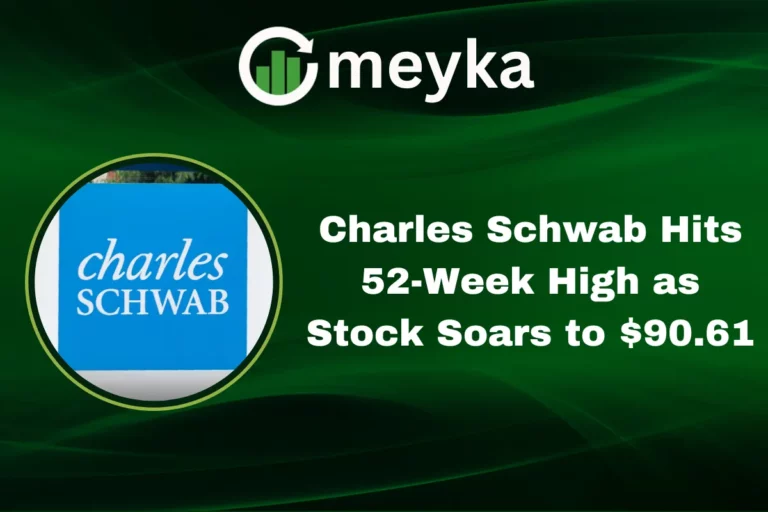Stock Split Announced by TNF Pharmaceuticals Amid Nasdaq Compliance Push
TNF Pharmaceuticals has officially announced a reverse stock split as part of its ongoing efforts to meet Nasdaq listing compliance. This move is seen as a critical step to maintain its presence on the exchange and to reassure investors about the company’s long term growth strategy. The announcement has already created strong discussions in the market about what it could mean for shareholders and the future of the company.
But why is this move important now? The biotech industry is going through intense competition and strict regulatory requirements. For TNF Pharmaceuticals, staying listed on Nasdaq is not just about compliance, it is about credibility, visibility, and maintaining access to capital for future research and development.
The reverse stock split is aimed at strengthening the company’s financial standing and helping it stay attractive in the eyes of both institutional and retail investors.
Why Did TNF Choose a Reverse Stock Split Now?
Nasdaq requires listed companies to maintain a minimum bid price of $1 per share. TNF’s stock had traded below that threshold, putting it at risk of delisting. The reverse stock split is a common tool to raise the per-share price immediately above compliance levels.
TNF had a 180-day window granted by Nasdaq to correct the situation by September 15, 2025. The 1-for-100 consolidation ensures the listing remains intact. It follows a previous 1-for-30 action in early 2024, showing an ongoing effort to address structural share price issues.
What Does This Mean for Investors?
Right after the split, the company’s overall value remains the same, only the number of shares changes. If you held 10,000 shares before, you’ll own 100 shares after the split. No dilution occurs, your ownership percentage stays intact.
Some investors react by selling immediately, sensing risk. In TNF’s case, the stock dropped roughly 30 percent intraday, falling from $0.09 to near $0.06. That move reflects market skepticism and technical selling pressure typical after reverse splits.
Strategic Implications for TNF Pharmaceuticals
This step is more than regulatory housekeeping. Behind it lies a broader financial restructuring plan aimed at extending TNF’s runway. The company recently secured approximately $5.9 million in liquidity and reduced liabilities, which supports ongoing trials.
Importantly, TNF is focused on advancing two novel therapeutic platforms: Isomyosamine, aimed at treating chronic inflammation by regulating key cytokines, and Supera-CBD, targeting pain and neurological disorders. The reverse stock split may improve credibility with investors and partners as these drug candidates move toward clinical milestones.
Governance also improved: board size was reduced, bylaws amended, and authorized shares increased,all intended to streamline decision-making and future fundraising potential.
What Are the Risks and Watch Points?
While the split helps maintain Nasdaq listing, several risks linger:
- Liquidity dropped sharply, with daily volume surging immediately but real tradability thin at the new low price.
- The stock trades well below its 200-day moving average, and technical indicators suggest continued bearish momentum
- Investor sentiment remains fragile unless clinical or financial developments restore confidence.
However, the split does buy TNF time. If pipeline updates are positive and market perception improves, the company could rebuild value over time.
What Should Investors Do?
If you are an investor in TNF:
- Don’t panic-sell the day of the split, but monitor volume and trading levels closely.
- Focus on upcoming news, especially clinical updates for Isomyosamine (Phase 2b) and Supera-CBD (IND progress).
- Use technical levels: post-split day-low near $0.06 and 30-day moving average near $0.10 are key zones.
- Remember this split does not change company fundamentals; it simply creates a price buffer.
Conclusion: A Tactical Stock Split With Strategic Goals
In short, TNF Pharmaceuticals carried out a 1-for-100 reverse stock split to meet Nasdaq’s $1 minimum bid price, consolidate its share base, and signal stability. The company remains focused on advancing two promising drug platforms and keeping its listing. The immediate price action reflects volatility, but longer-term value depends on clinical progress and financial discipline. This stock split is a regulatory lifeline, but real value will come from results.
FAQ’S
The company announced the reverse stock split to regain compliance with Nasdaq listing requirements and improve its stock price for investor confidence.
Shareholders will own fewer shares, but the overall value of their investment will remain the same since the split adjusts the share price proportionally.
TNF Pharmaceuticals approved a 1 for 10 reverse stock split, consolidating every 10 shares into 1, to meet Nasdaq’s minimum price requirement.
Not always. A reverse stock split is often a strategic move to stay compliant with exchange rules and can sometimes signal long term growth intentions.
The reverse stock split shows TNF’s commitment to remaining on Nasdaq, strengthening its credibility, and focusing on long term biotech innovation.
Disclaimer
This content is made for learning only. It is not meant to give financial advice. Always check the facts yourself. Financial decisions need detailed research.






